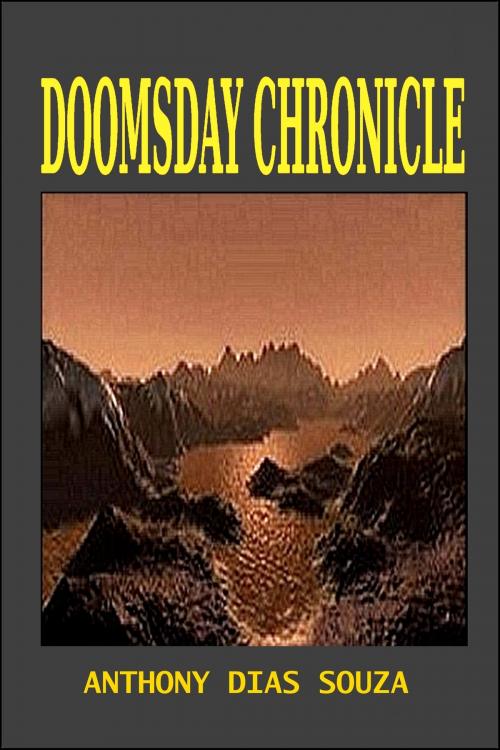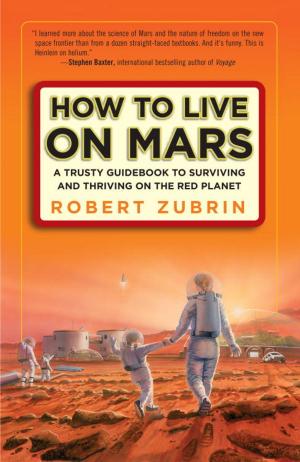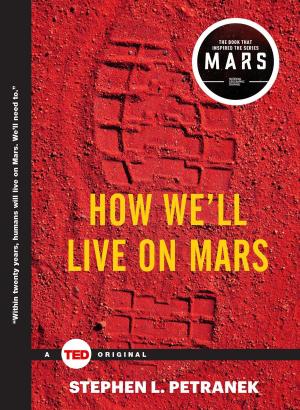Doomsday Chronicle
Nonfiction, Science & Nature, Science, Earth Sciences, Palaeontology, Physics, Astrophysics & Space Science| Author: | Anthony Dias Souza | ISBN: | 9781370472970 |
| Publisher: | Anthony Dias Souza | Publication: | July 29, 2016 |
| Imprint: | Smashwords Edition | Language: | English |
| Author: | Anthony Dias Souza |
| ISBN: | 9781370472970 |
| Publisher: | Anthony Dias Souza |
| Publication: | July 29, 2016 |
| Imprint: | Smashwords Edition |
| Language: | English |
Welcome to Doomsday
The world will end shortly - well almost. With luck, a fourth of the human race will survive. At least about that percentage did the last time. Back then, an indeterminate number of living beings ranging in the hundreds of millions died. The physical evidence is there. Remains of carcasses litter the Earth - more than 40 million in North America alone. Elsewhere in the world, on every continent, skeletons have been found buried beneath up to a hundred feet of solidified mud or huddled in caves where they sought refuge in vain. In the latter case, totally incompatible species, predators and prey alike, died catastrophically, their limbs and bodies violently torn apart. This took place in the past over 6000 years ago, and it is about to happen again. Conditions are building toward another worldwide cataclysm and time is growing short. Still the pending disaster receives little publicity and, although the renowned Albert Einstein stated the matter "deserves serious attention", governments across the globe have failed to respond. The looming holocaust has not been broached by the United Nations where this threat to civilization is not even being discussed. Beyond an occasional mention in the pages of a few isolated scientific journals, it is as if no one really gives a damn.
As will be explained later, there soon will be a radical worldwide upheaval so volatile it will reshape the contours of the Earth. The results will be so horrendous they will exceed the most negative assessment of the aftermath of a global nuclear war.
Operating on the erroneous assumption that this coming cataclysm will not take place within the next few thousand years, the scientific establishment ignores the problem, opting to leave it for future generations to resolve. However, the process leading to universal destruction began about 6000 years ago and is rapidly approaching critical mass. With the suddenness of an earthquake (which we still cannot predict), civilization will self-destruct as our planet distorts and rearranges itself as it has done repeatedly in the past. A 6000 year old yesterday is about to become a violent tomorrow with more than three billion people dead and another hundred million or more on the brink of starvation, plagued by universal chaos and rampant disease.
If the above has managed to capture your attention, read on but be forewarned that, while the possibility of forestalling the approaching cataclysm exists, we shall be bucking the odds. If our technology cannot interrupt and reverse this process leading to a global upheaval, it at least may try to limit the casualties and see that the better part of our progress manages to survive. The time to act is now. Tomorrow may be too little, too late.
Welcome to Doomsday
The world will end shortly - well almost. With luck, a fourth of the human race will survive. At least about that percentage did the last time. Back then, an indeterminate number of living beings ranging in the hundreds of millions died. The physical evidence is there. Remains of carcasses litter the Earth - more than 40 million in North America alone. Elsewhere in the world, on every continent, skeletons have been found buried beneath up to a hundred feet of solidified mud or huddled in caves where they sought refuge in vain. In the latter case, totally incompatible species, predators and prey alike, died catastrophically, their limbs and bodies violently torn apart. This took place in the past over 6000 years ago, and it is about to happen again. Conditions are building toward another worldwide cataclysm and time is growing short. Still the pending disaster receives little publicity and, although the renowned Albert Einstein stated the matter "deserves serious attention", governments across the globe have failed to respond. The looming holocaust has not been broached by the United Nations where this threat to civilization is not even being discussed. Beyond an occasional mention in the pages of a few isolated scientific journals, it is as if no one really gives a damn.
As will be explained later, there soon will be a radical worldwide upheaval so volatile it will reshape the contours of the Earth. The results will be so horrendous they will exceed the most negative assessment of the aftermath of a global nuclear war.
Operating on the erroneous assumption that this coming cataclysm will not take place within the next few thousand years, the scientific establishment ignores the problem, opting to leave it for future generations to resolve. However, the process leading to universal destruction began about 6000 years ago and is rapidly approaching critical mass. With the suddenness of an earthquake (which we still cannot predict), civilization will self-destruct as our planet distorts and rearranges itself as it has done repeatedly in the past. A 6000 year old yesterday is about to become a violent tomorrow with more than three billion people dead and another hundred million or more on the brink of starvation, plagued by universal chaos and rampant disease.
If the above has managed to capture your attention, read on but be forewarned that, while the possibility of forestalling the approaching cataclysm exists, we shall be bucking the odds. If our technology cannot interrupt and reverse this process leading to a global upheaval, it at least may try to limit the casualties and see that the better part of our progress manages to survive. The time to act is now. Tomorrow may be too little, too late.















